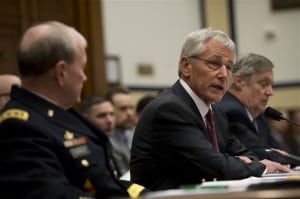
For the second day in a row, the defense secretary and chairman of the Joint Chiefs of Staff brought their 2015 budget request to Capitol Hill, only to have lawmakers indicate their higher-than-sequester budget levels were unlikely to be approved and their spending priorities were likely to be changed to get rid of several “politically unpopular” ideas–though this time, the chairman outlined a list of unsavory alternative ways to cut billions of dollars if Congress rejects the Pentagon's recommendations. On…













